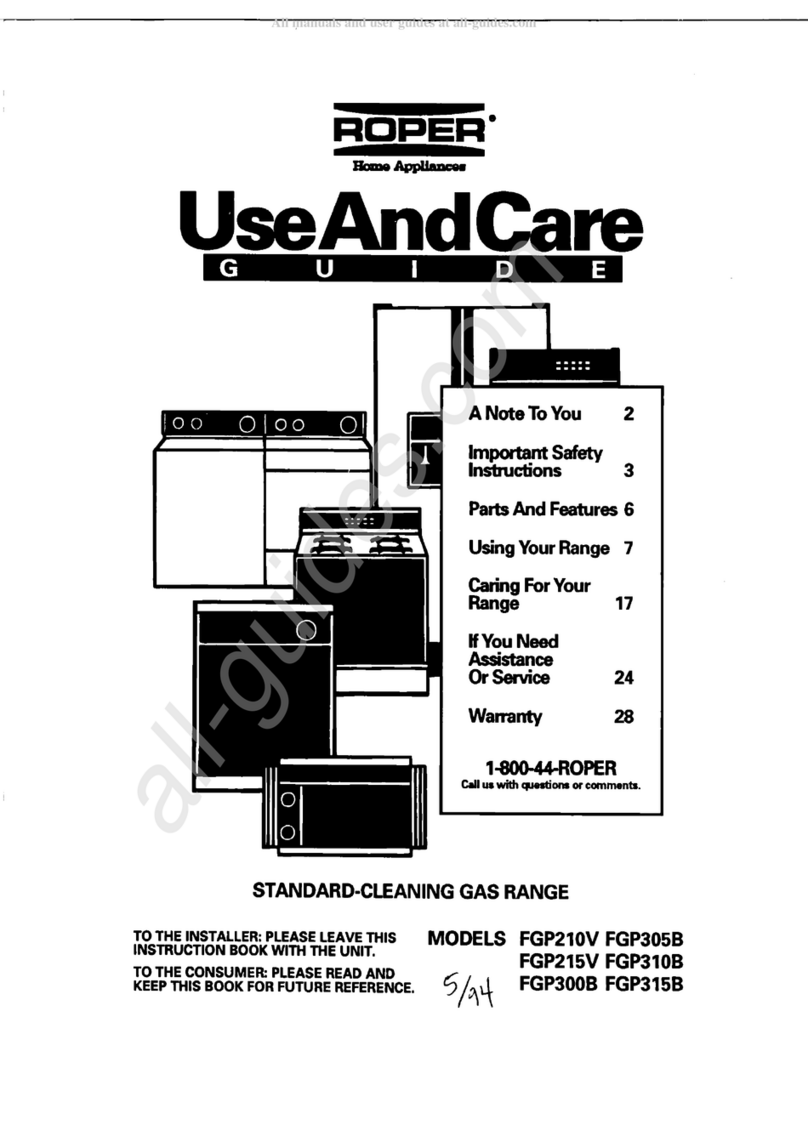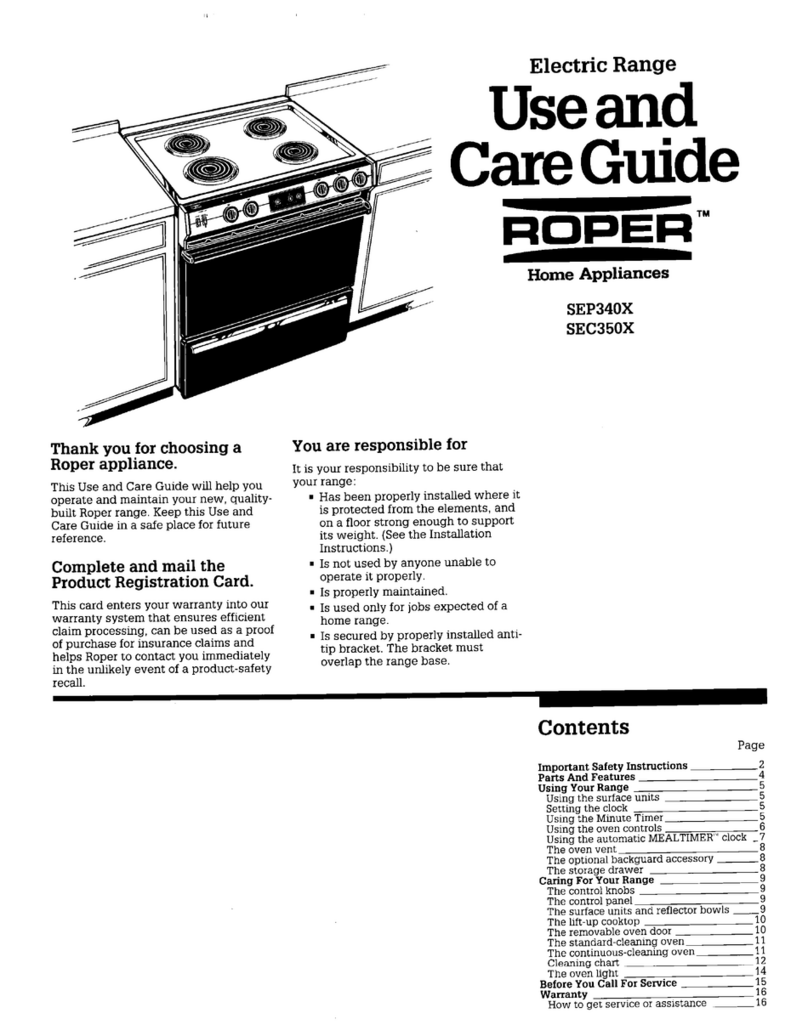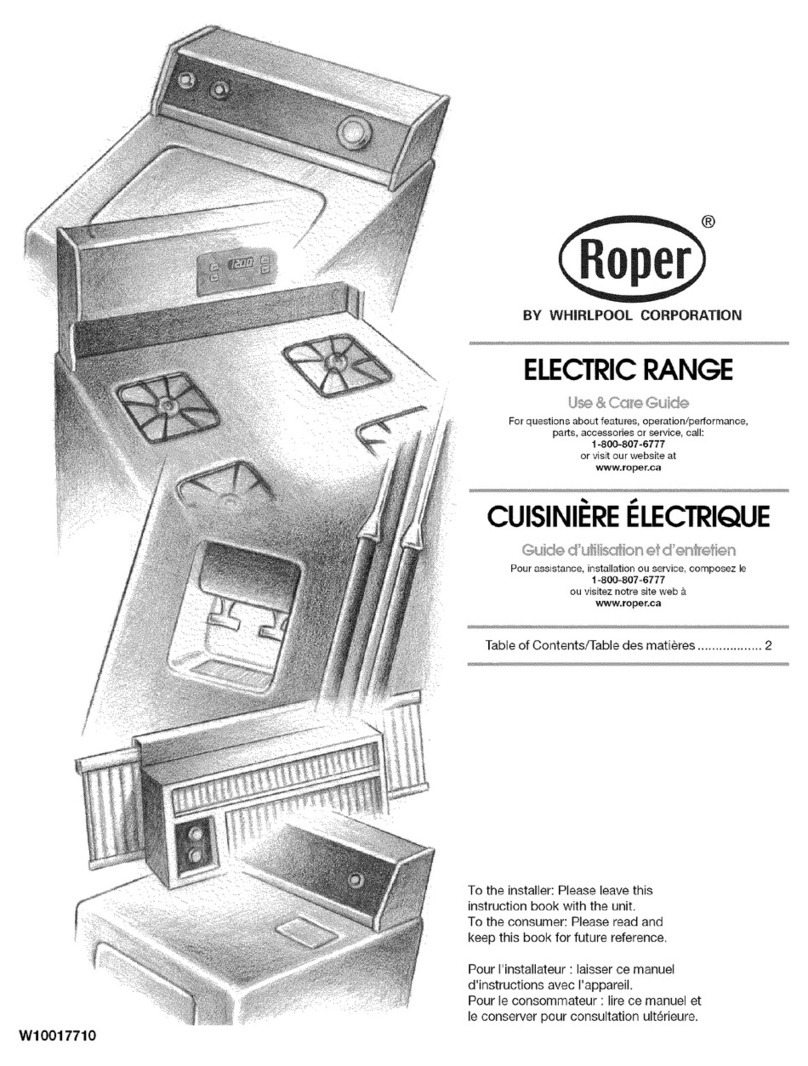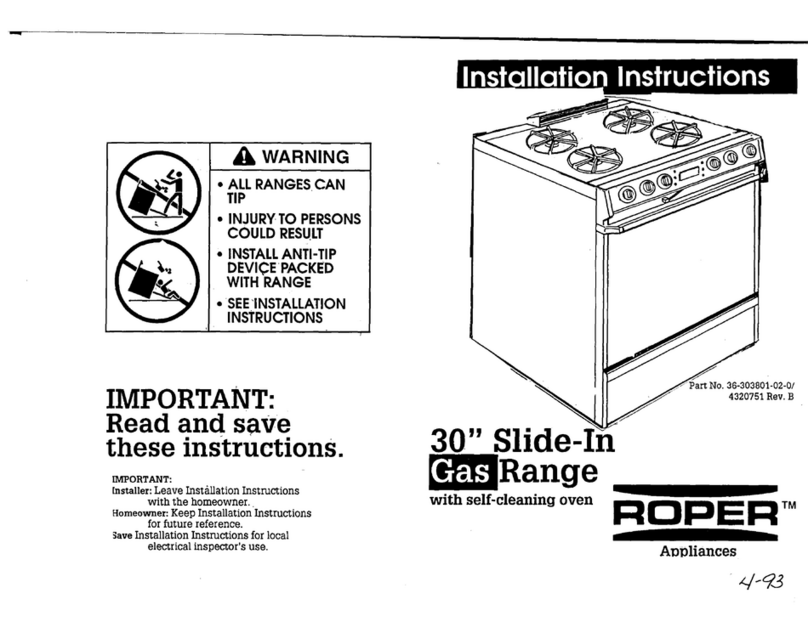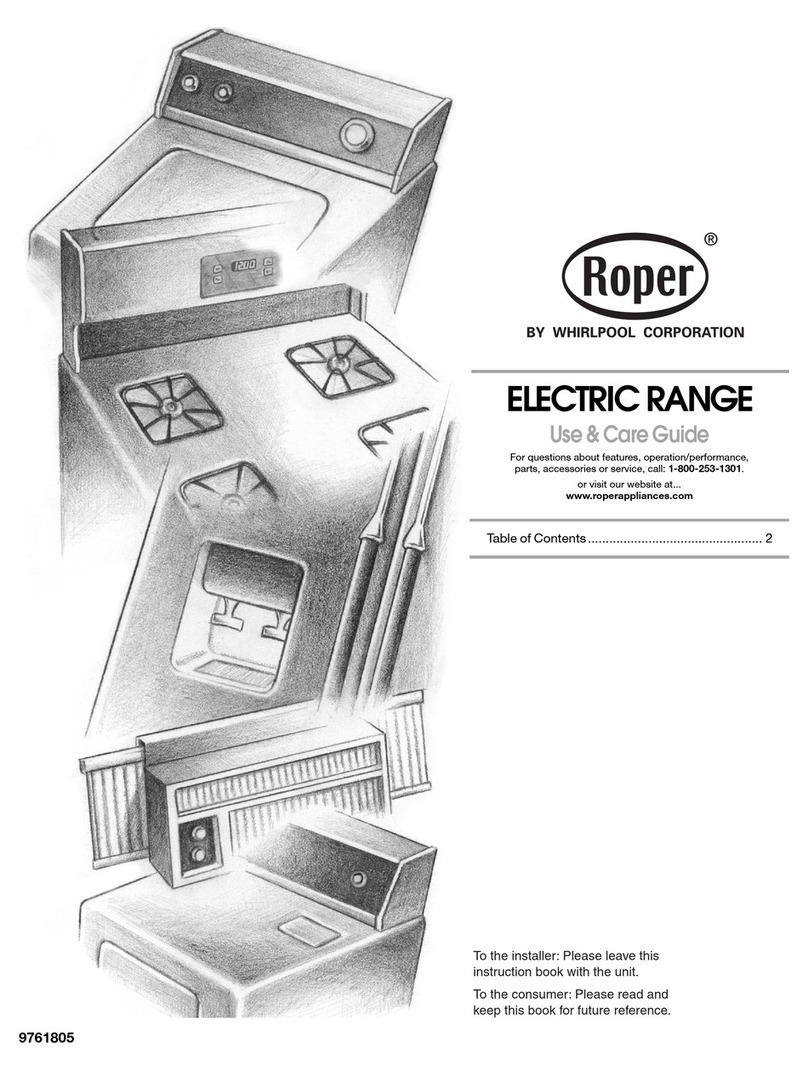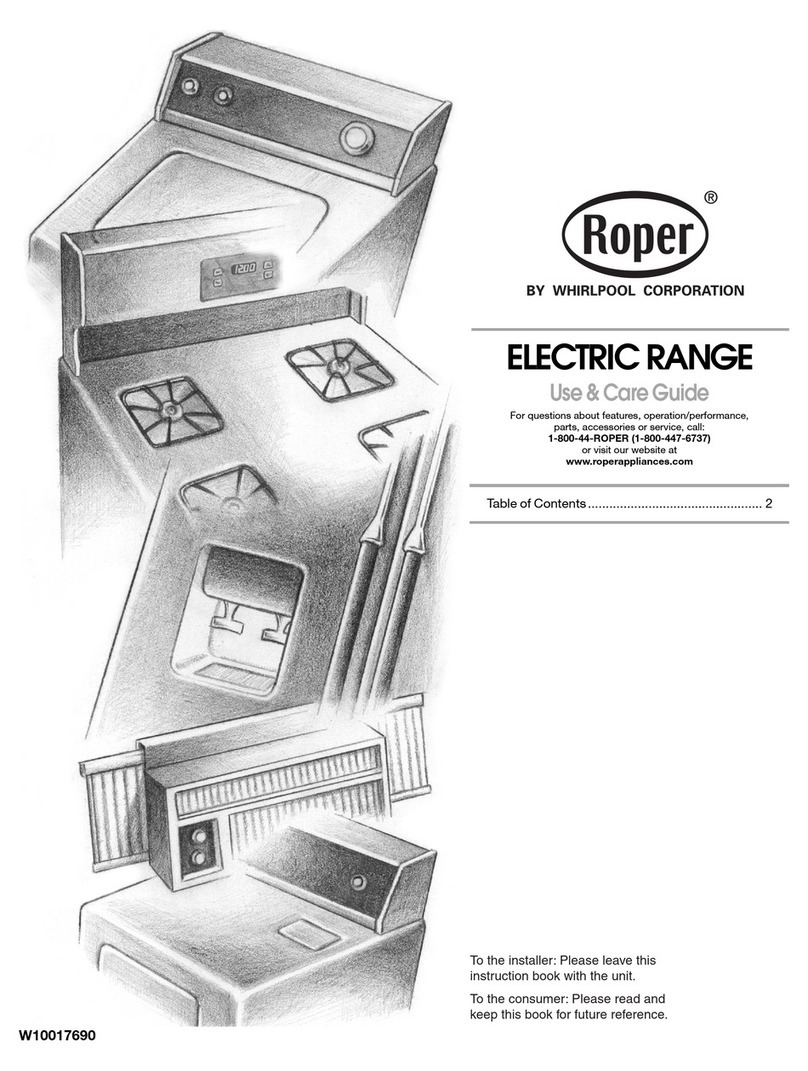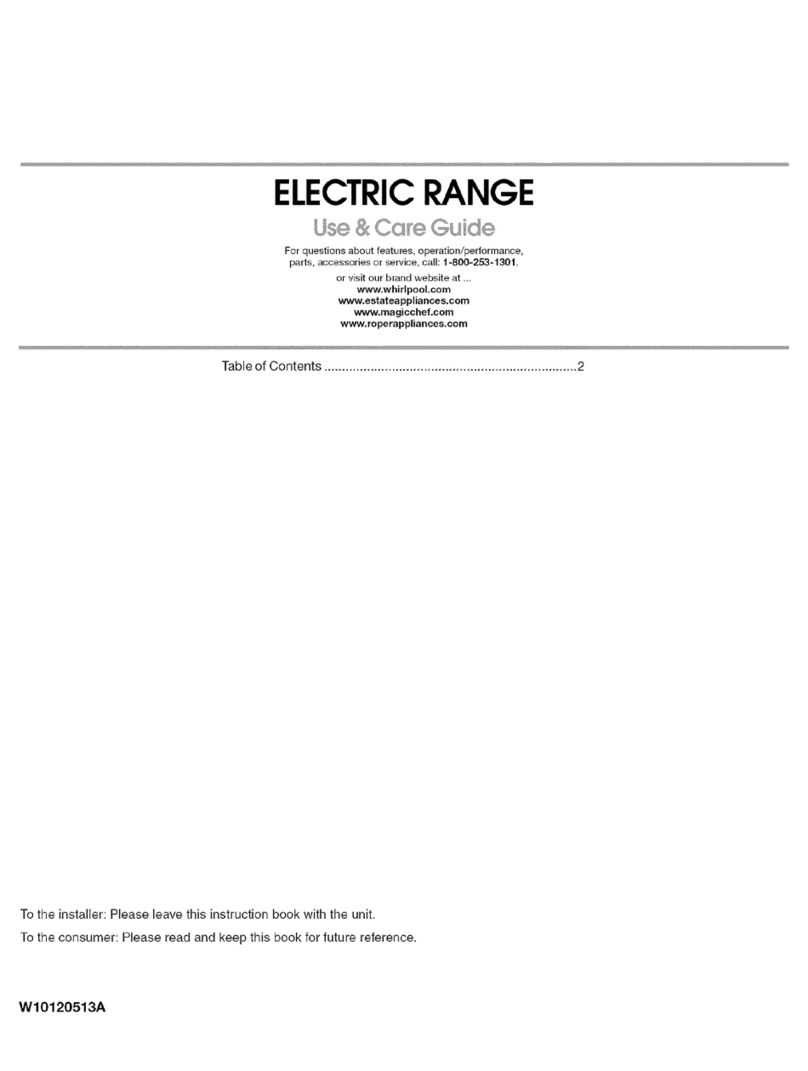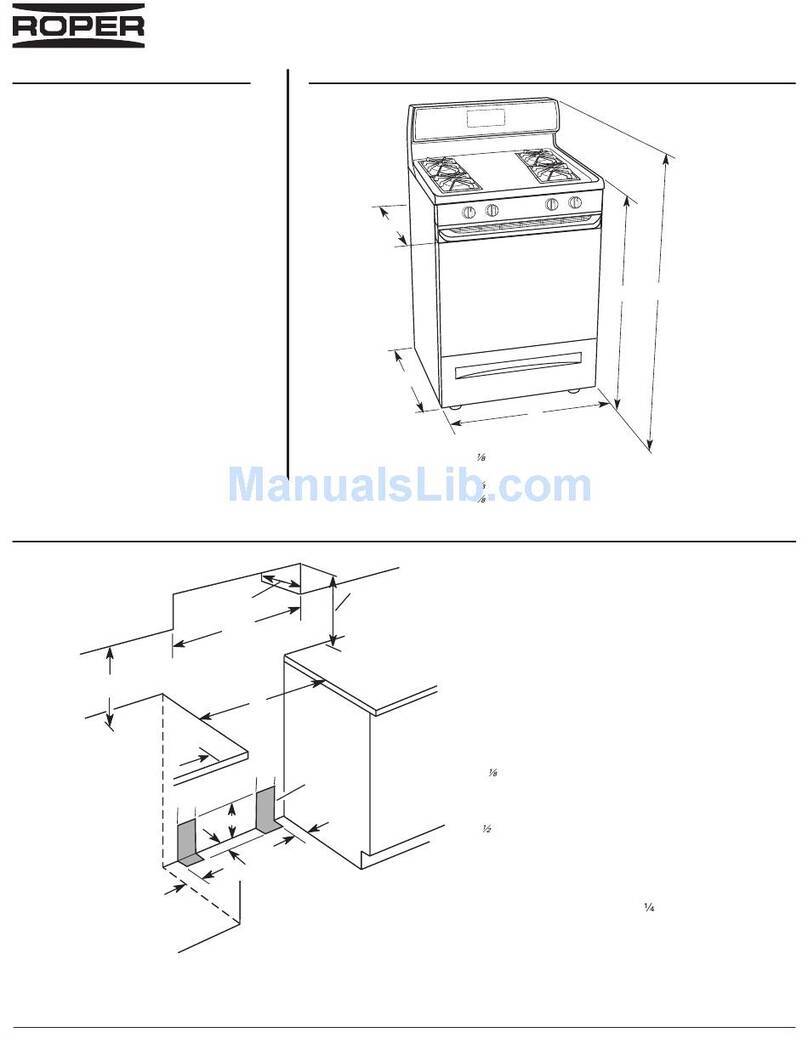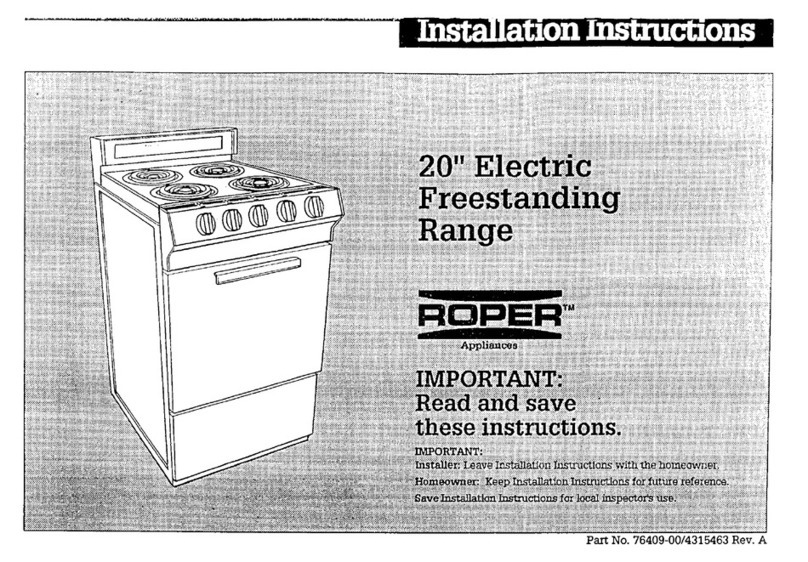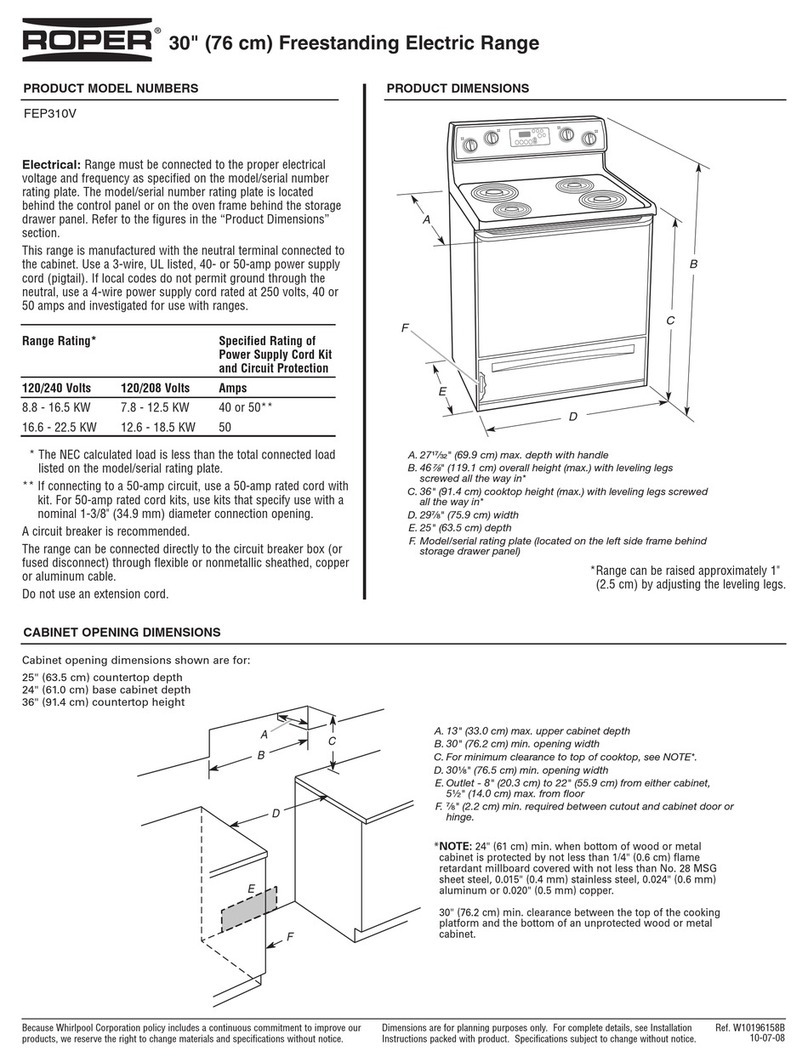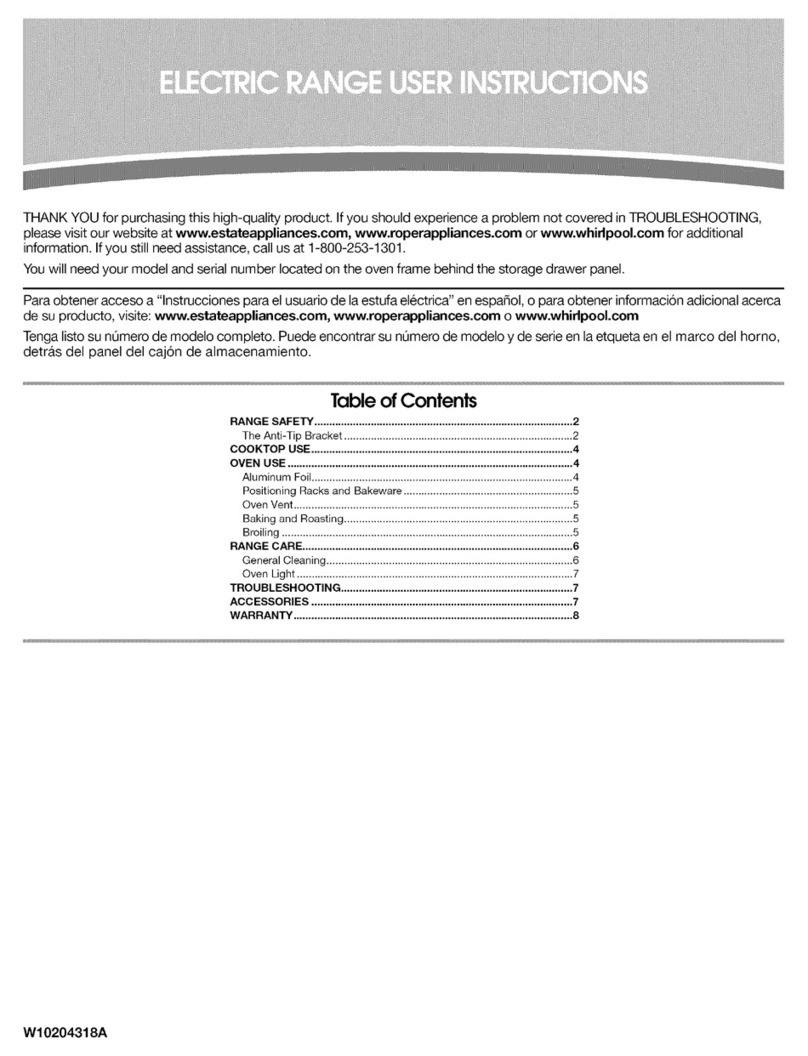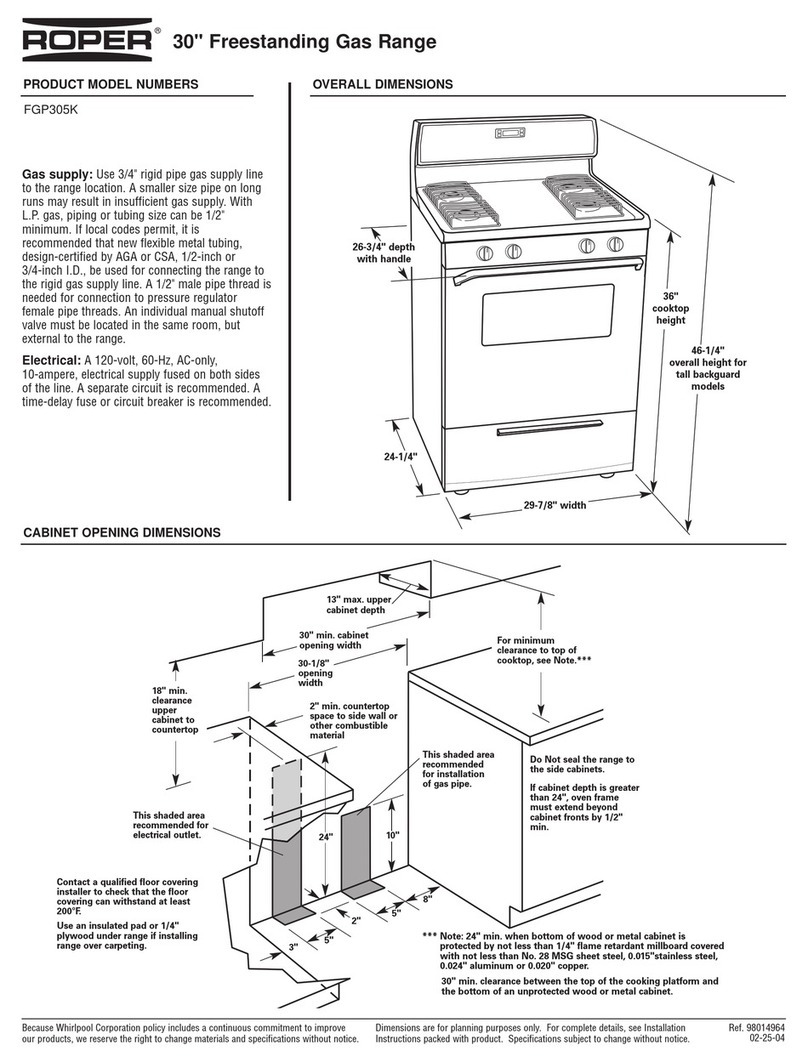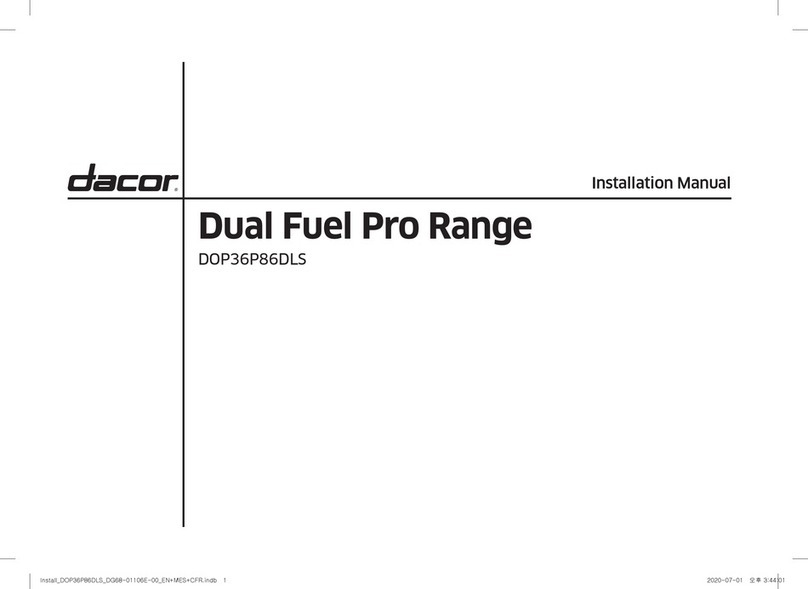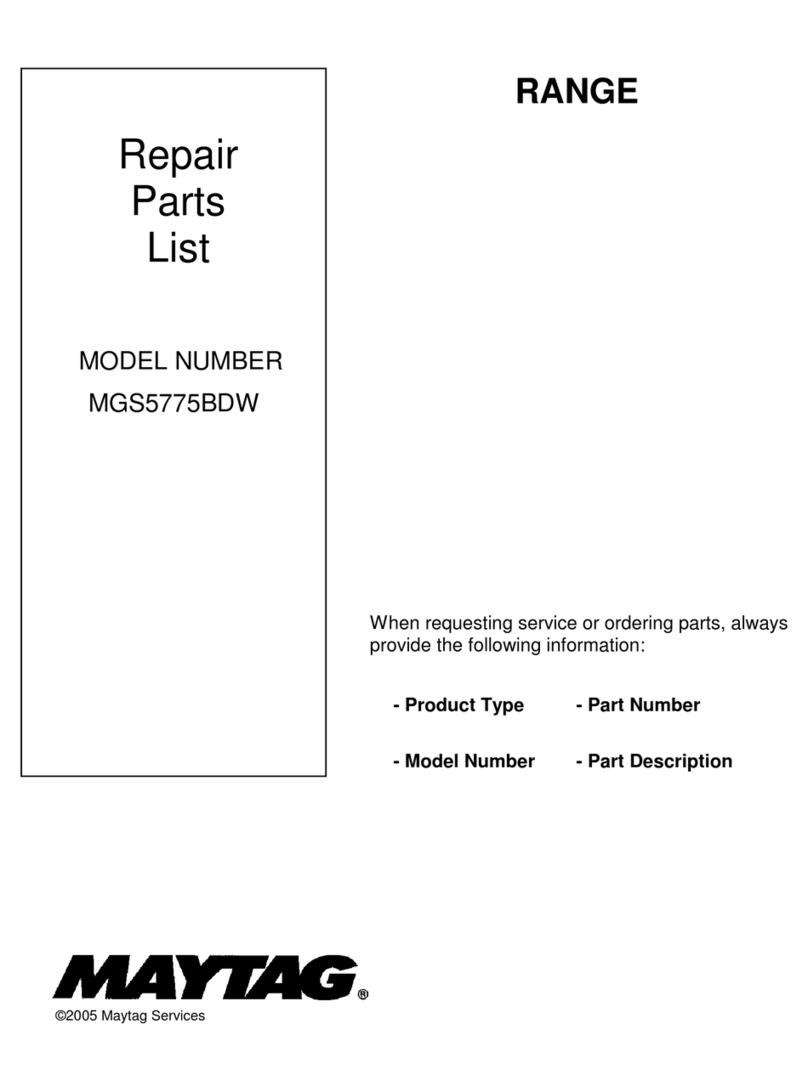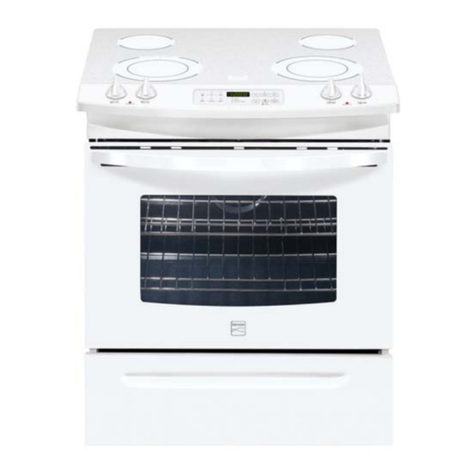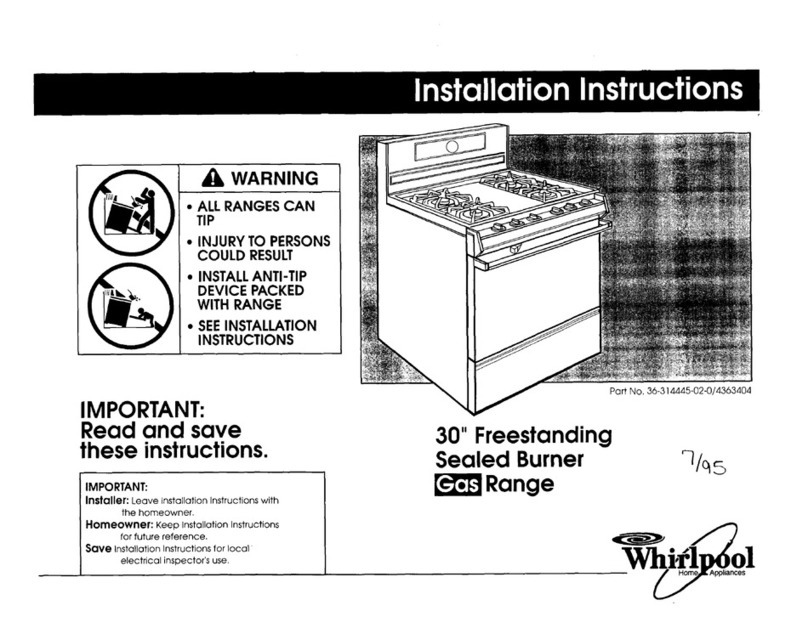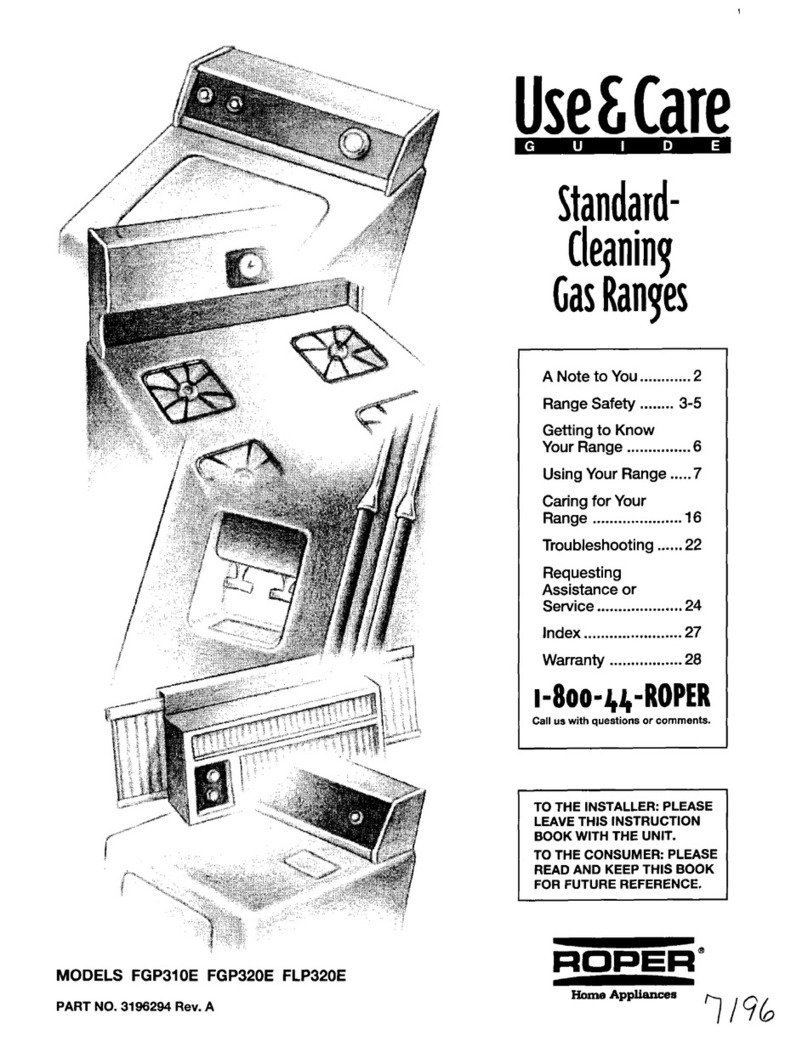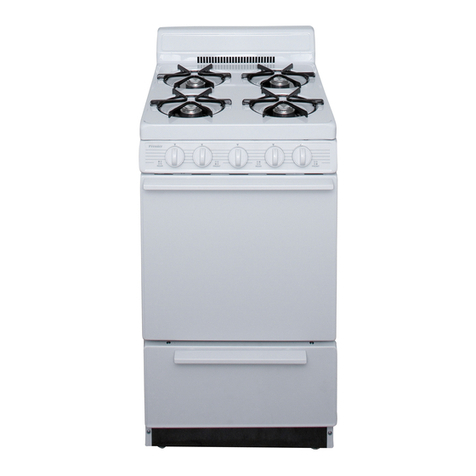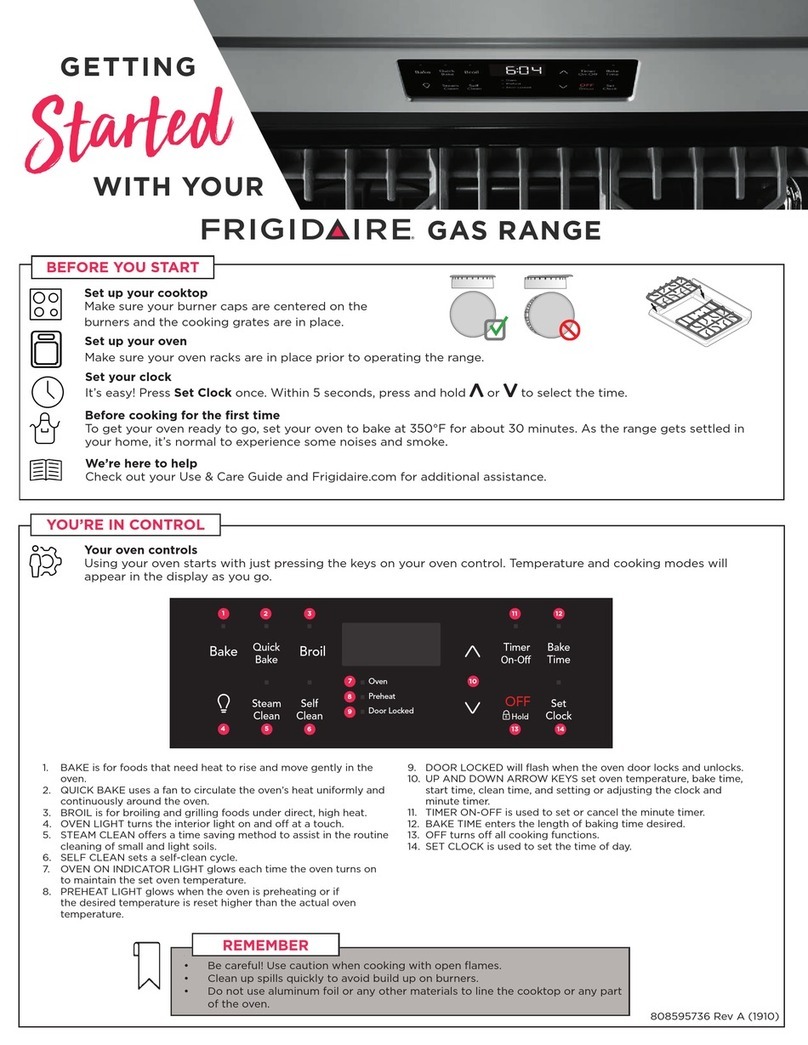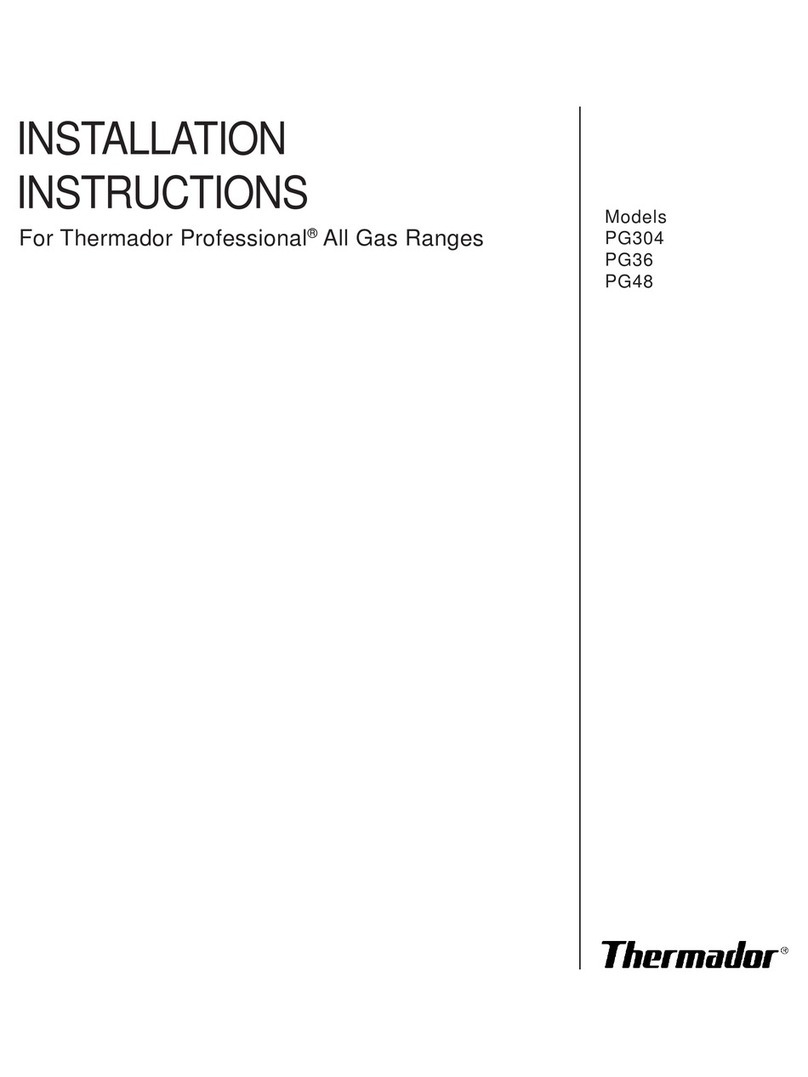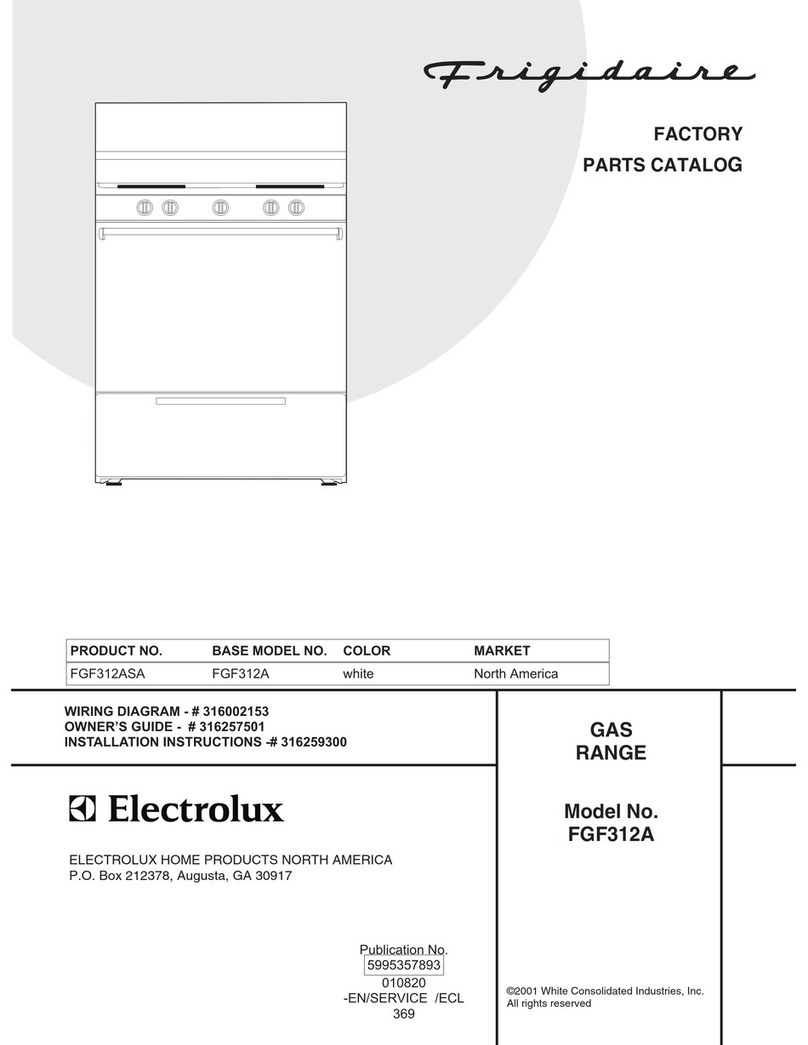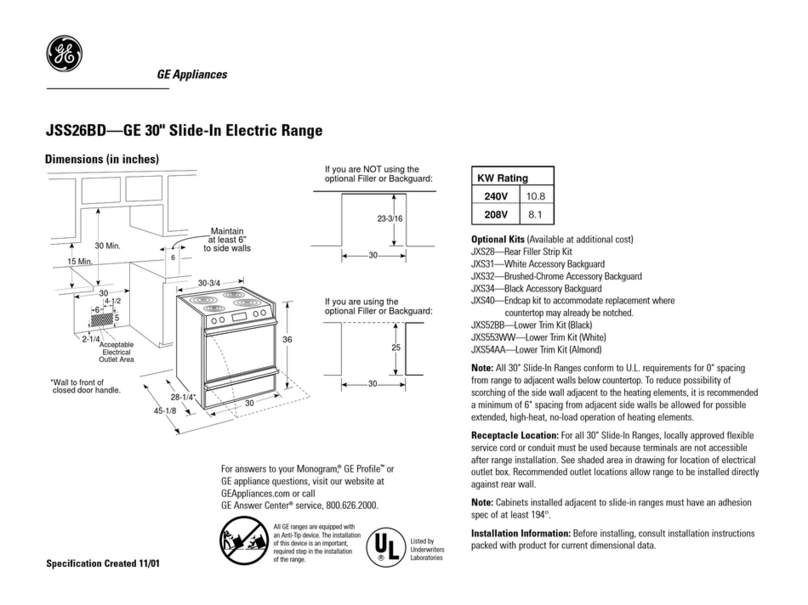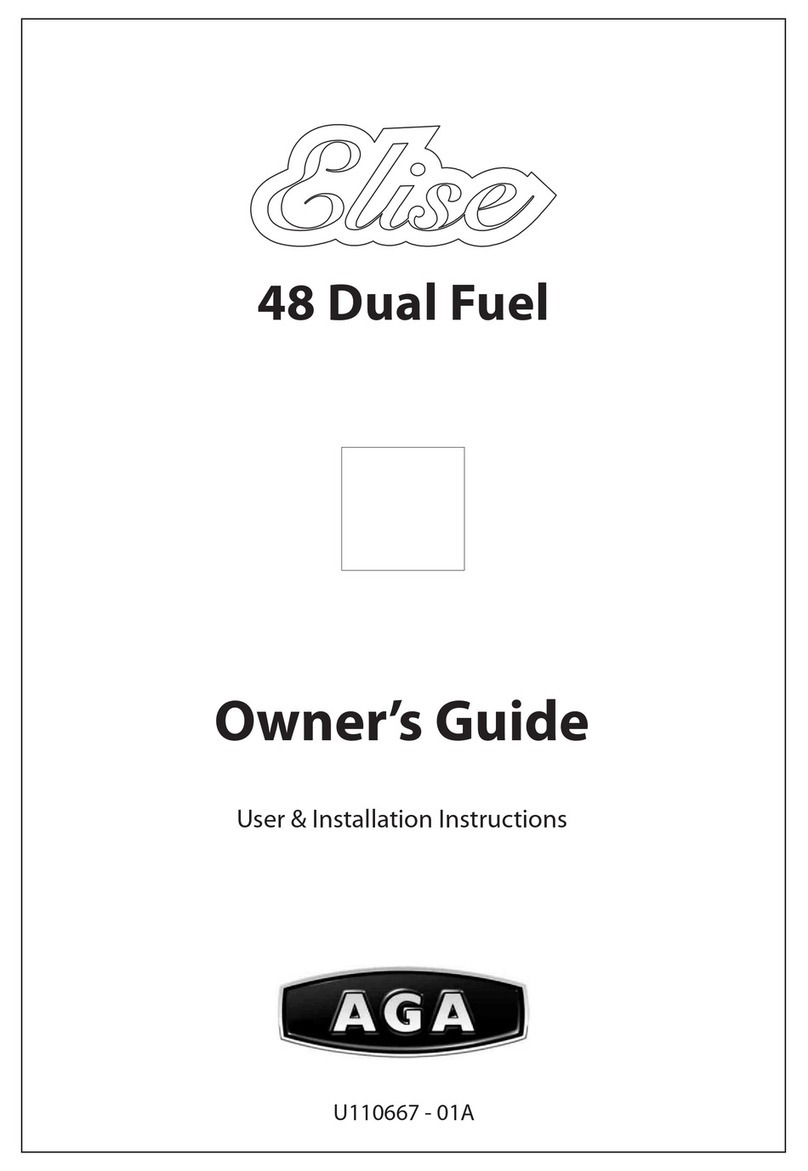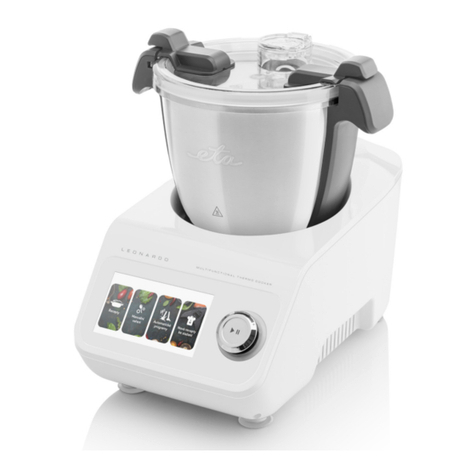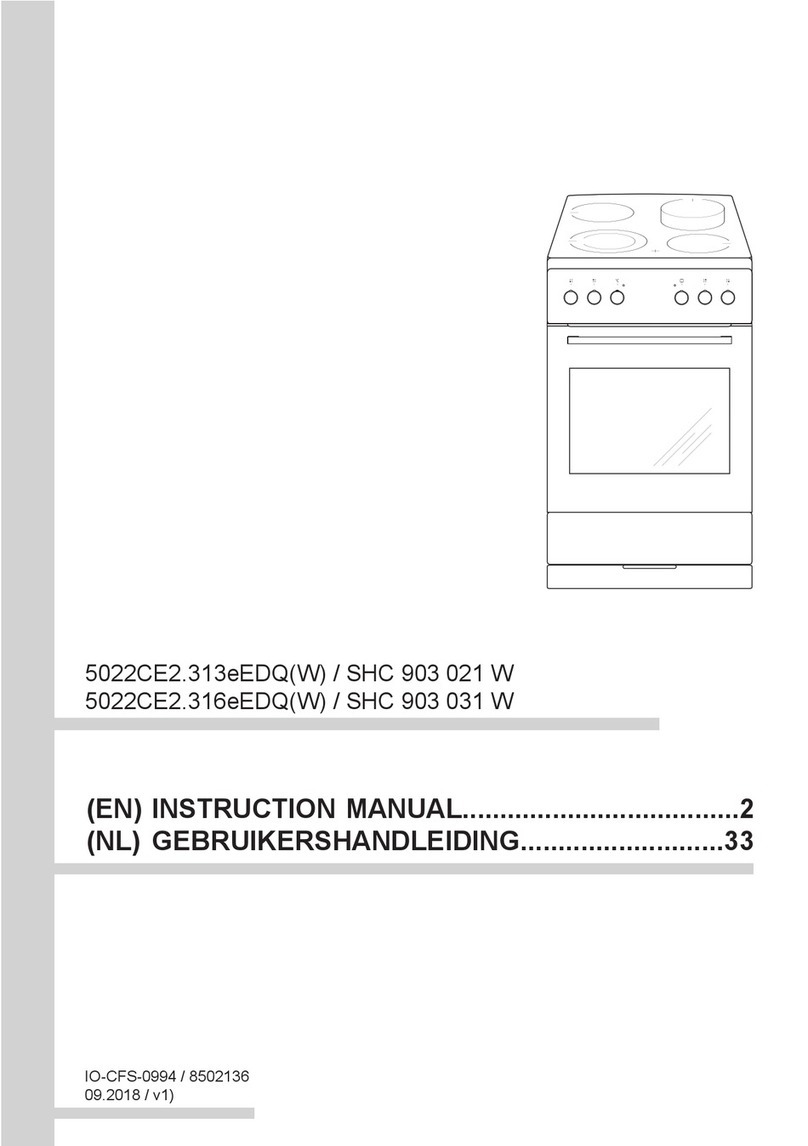
20
Para limpiar:
IMPORTANTE: Antes de limpiar, cerciórese de que todos los
controles estén apagados y que el horno y la superficie de
cocción estén fríos. No use productos comerciales para limpiar
hornos, blanqueadores o disolventes de óxido.
1. Quite las parrillas del quemador exterior.
2. Quite la tapa del quemador de la base del quemador y limpie
tal como se indica en la sección “Limpieza general”.
3. Limpie la abertura del tubo de gas con un paño húmedo.
4. Limpie los orificios obstruidos del quemador con un alfiler
recto, tal como se ilustra. No agrande ni distorsione el orificio.
No use palillos de dientes de madera. Si el quemador
necesita ser regulado, póngase en contacto con un técnico
de reparación competente.
5. Vuelva a colocar la tapa del quemador sobre la base del
mismo, asegurándose de que las espigas de alineamiento
estén debidamente alineadas con la tapa del quemador.
6. Vuelva a colocar las parrillas del quemador exterior en su
lugar.
7. Encienda el quemador. Si el quemador no se enciende,
verifique el alineamiento de la tapa. Si el quemador todavía
no se enciende, no intente reparar el quemador por su
cuenta. Póngase en contacto con un técnico de reparación
competente.
Enlatado casero
Al preparar enlatados durante períodos prolongados, alterne el
uso de las áreas de cocción exteriores, elementos o quemadores
exteriores entre cada lote. Esto da tiempo para que las áreas
usadas recientemente se enfríen.
■Centre el envasador en la parrilla o el área o elemento de
cocción exterior más grande. En las superficies de cocción
eléctricas, los envasadores no deben extenderse más de ½"
(1,3 cm) fuera del área o elemento de cocción.
■No coloque el envasador sobre dos áreas de cocción
exteriores, elementos o quemadores exteriores a la vez.
■En modelos con cerámica vitrificada, use únicamente
envasadores de fondo llano.
■En modelos con elementos en espiral, se recomienda la
instalación de un equipo para envasar. De no instalarlo, la
duración del elemento en espiral se acortará. Vea la sección
“Ayuda o servicio técnico” para obtener las instrucciones de
cómo pedirlo.
■Para mayor información, póngase en contacto con la U.S.
Government Agricultural Department Extension Office
(Oficina de Extensión del Departamento de Agricultura del
Gobierno de los EE.UU.) de su localidad. Las compañías que
fabrican productos para enlatado casero también pueden
ayudarle.
Utensilios de cocina
IMPORTANTE: No deje utensilios de cocina vacíos encima de un
área de cocción exterior, elemento o quemador exterior caliente.
Los utensilios de cocina ideales deben tener un fondo plano,
lados rectos, una tapa que encaje bien y el material debe ser de
un espesor mediano a grueso.
Las superficies ásperas pueden arañar la superficie de cocción o
las parrillas. El aluminio y el cobre pueden emplearse como
núcleo o base en los utensilios de cocina. Sin embargo, al ser
usados como base, pueden dejar marcas permanentes en la
superficie de cocción o las parrillas.
El material de los utensilios de cocina es un factor que repercute
en la rapidez y uniformidad en que se transmite el calor, lo cual
afecta los resultados de cocción. Un acabado antiadherente
tiene las mismas características de su material base. Por
ejemplo, utensilios de aluminio con un acabado antiadherente
tendrán las propiedades del aluminio.
No deben usarse utensilios de cocina con superficies
antiadherentes debajo del asador.
Use el siguiente cuadro como guía respecto a las características
del material de los utensilios de cocina.
A. Incorrecto
B. Correcto
A
B
UTENSILIO DE
COCINA CARACTERÍSTICAS
Aluminio ■Calienta rápida y uniformemente.
■Adecuado para todo tipo de cocción.
■Espesor mediano o grueso es mejor
para la mayoría de tareas culinarias.
Hierro fundido ■Calienta lenta y uniformemente.
■Bueno para dorar y freír.
■Mantiene el calor para una cocción
lenta.
Cerámica o
cerámica
vitrificada
■Siga las instrucciones del fabricante.
■Calienta lentamente pero no
uniformemente.
■Resultados ideales en ajustes de
fuego bajo a mediano.
Cobre ■Calienta muy rápida y uniformemente.
Loza de barro ■Siga las instrucciones del fabricante.
■Use en ajustes de calor bajo.
Acero o hierro
fundido
esmaltado de
porcelana
■Vea acero inoxidable o hierro fundido.
Acero
inoxidable
■Calienta rápidamente pero no
uniformemente.
■Un centro o base de aluminio o cobre
sobre el acero inoxidable proporciona
un calor uniforme.





















